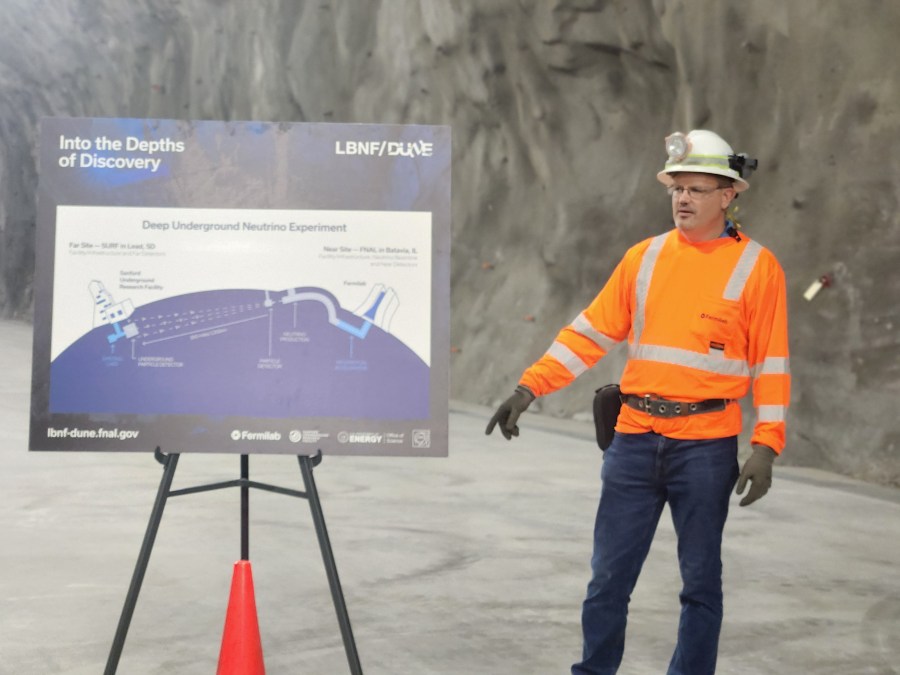LEAD, S.D. (KELO) –The DUNE Project has gone through three years of excavation that has led to the Sanford Underground Research Facility being able to take the next steps in the study of neutrinos.
Over 200 people have been involved with getting the colossal caverns prepared for the underground neutrino laboratory.
“One of the reasons the focus started here at the farsite, we call it the farsite in South Dakota, is that we can do science and Jaret can elaborate, we can do science with the detectors without a beam. Fact is that’s really the traditional way of studying neutrinos has been studying cosmic neutrinos, and not necessarily beam based neutrinos,” Dune Facility Project Manager Josh Willhite said.

One way neutrinos affect everyday life is through medical imaging.
“Neutrinos are complicated. And it’s that fact that they have these other quantum mechanical components that can interfere with each other from where they’re produced in Chicago, to where they’re detected here in South Dakota,” SURF Science Director Jaret Heise said.
This location is ideal because it maximizes the signal that both SURF and Fermilab are looking for.

“There’s more physics that we think is hidden in how a neutrino interacts, that we haven’t been able to see with the course measurements taken place so far. So the precise measurements that DUNE will provide will give us further insights into this matter dominated universe that we see,” Heise said.
The biggest challenge of working one mile underground is getting the materials down.
“You rode down on the shaft. That is how we get everything down so there’s no other bigger space to take parts and pieces through. So everything has to be disassembled if it doesn’t fit in there. It gets taken apart, sent down and reassembled,” Willhite said.

The scientists at SURF will continue to work on figuring out more about neutrinos right away.
Now with the caverns open, detectors will start to make their way down over the next year to help with this project.

